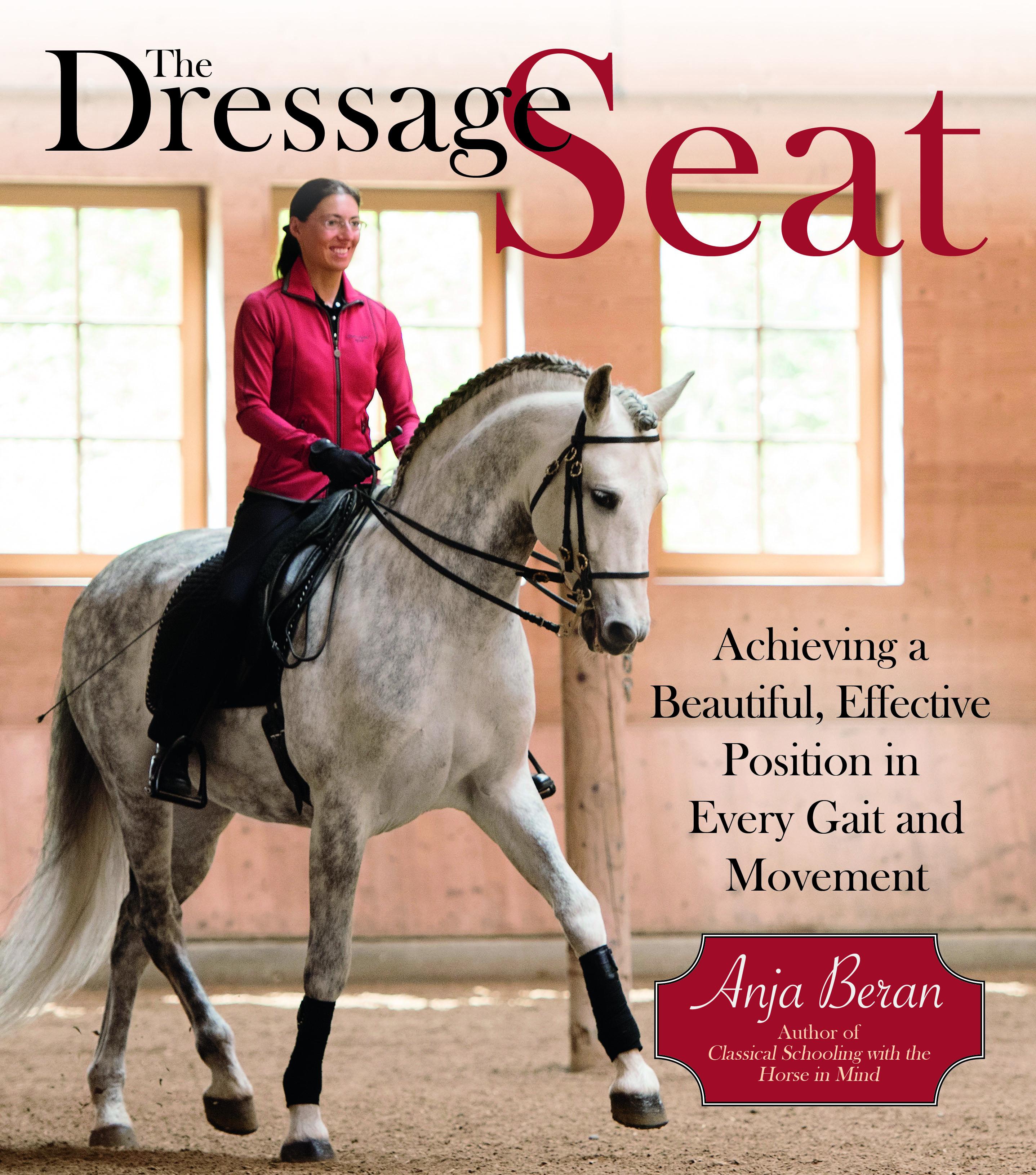
How to Develop Ideal Posture on Horseback
How does one achieve ideal posture on horseback? By practicing — on the ground! This excerpt from The Dressage Seat by Anja Beran details a great standing exercise.
The following practical exercise describes step by step how to develop the erect posture you desire in the saddle. Practice statically—not on the horse. Control of this posture on a horse or in dynamic movement requires a longer period of practice.
Standing Exercise
1. Stand sideways in front of a large mirror so that you can visually check and observe every step.
2. Place your feet parallel and a little wider apart than your shoulders with knees slightly bent. This corresponds to the sitting position on a horse.
3. Place your hands on the sides of your pelvis and move it forward and back without moving the rest of your body. For this selective pelvis tilt, imagine that your pelvis is a bowl filled with water, and dump the water out forward and backward.
4. Find the middle (neutral) position where the water in the imaginary bowl is level. That is the natural position of the pelvis, from which you can move forward or backward, and to which the pelvis returns again. This is the primary movement in riding. The pelvis connects you to the movement of the horse.
5. Lift your sternum diagonally forward and up. Imagine that your sternum is pulled diagonally forward and up by a string.
6. Put your hands on the sides of your rib cage and breathe deeply in and out to feel the movement of the ribs. With a deep exhale, the ribs close and the position is held by the tension of the upper abdominal muscles, and the sternum is pulled as much as possible diagonally forward and up. In this way you are essentially breathing over the stomach (diaphragm) into the sides of the chest and the back area of the ribs (the back). The middle “building block” is held “plumb” and remains exactly above the pelvis building block.
7. Let your arms hang loosely beside your body, with the shoulder joints in a relaxed neutral position and the shoulder blades pulled down. Imagine that you want to stick your shoulder blades in your back pockets. From the side, your shoulder girdle should now be directly above the pelvis without being behind it. There should not be any rotation in your body.
8. Straighten your head by taking the chin back a little (a slight double chin). The head is now in a neutral position between tending forward and backward. The neck vertebrae as well as the vertebrae of the chest are stretched upward while still maintaining their physiological curvature.
You are now in “erect posture.” All of your movements come from this position. The component parts return to this neutral position after all movement. This posture enables the greatest possible mobility in all directions. An additional advantage is that your muscles aren’t in a shortened position before a movement. This enables the rider to move optimally and to tense or relax with intention.
If you are in a bad position to start with, you will reach the endpoint of your motion quickly. The movement isn’t smooth and incorrect loading creates tension with possible damage to discs and joints. Since it is also unpleasant for the horse when the rider is tense, he is resistant.
Riding consists of a constant exchange of impulses and signals from both parties. Habitual posture errors and deviations from an erect posture must be analyzed and can be corrected with appropriate and usually simple measures.
An excerpt from The Dressage Seat by Anja Beran, reprinted with permission from Trafalgar Square Books (www.horseandriderbooks.com).









Leave a Comment